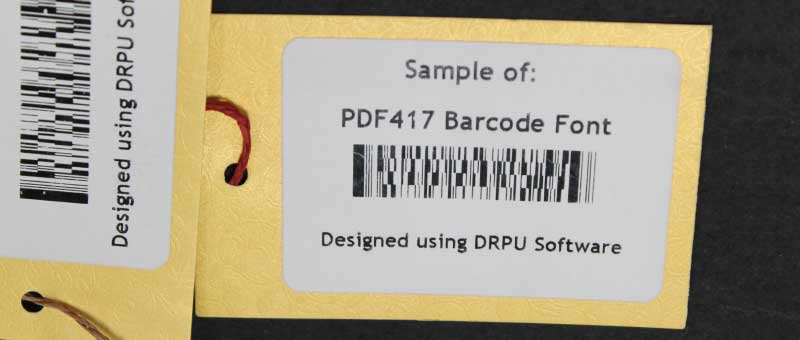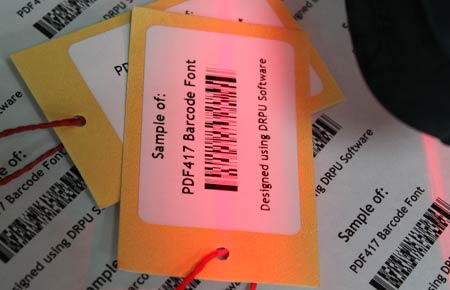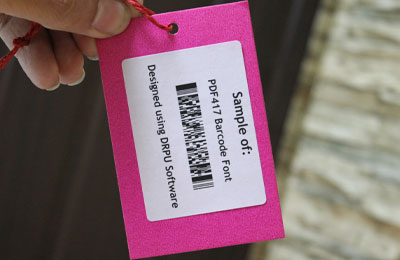Maximum Amount Of Data Can Be Stored In PDF417 Barcode
PDF417 barcodes are capable of storing large amounts of data, making them an attractive option for applications where a significant amount of information needs to be encoded in a relatively small space. The amount of data that can be stored in a PDF417 barcode depends on several factors, including the size of the barcode and the type of data being encoded.

The maximum amount of data that can be stored in a PDF417 barcode is 1,850 alphanumeric characters or 2,710 numeric characters. This limit is based on the size of the barcode, which is determined by the number of rows and columns used to encode the data. The more rows and columns that are used, the larger the barcode can be, and the more data it can store.
-
Maximum Amount Of Data
In addition to alphanumeric and numeric characters, PDF417 barcodes can also encode binary data, such as images or audio files. However, the amount of binary data that can be stored in a PDF417 barcode is typically much lower than the amount of alphanumeric or numeric data. This is because binary data requires more space to encode than simple text or numeric values.
It is important to note that the maximum amount of data that can be stored in a PDF417 barcode is only achievable under ideal conditions. Factors such as barcode quality, scanning distance, and the angle at which the barcode is scanned can all affect the readability of the barcode and the amount of data that can be successfully decoded. Additionally, some barcode scanners may not be able to read PDF417 barcodes that contain the maximum amount of data, so it is important to test the barcode under real-world conditions before deploying it in a production environment.
Printing Requirements for PDF417 Barcodes
PDF417 barcodes have specific printing requirements that must be met to ensure they can be easily read by barcode scanners. The printing requirements for PDF417 barcodes include the following:
-
Resolution:
PDF417 barcodes require a high-resolution printer to be printed effectively. The minimum resolution recommended for printing PDF417 barcodes is 203 dpi (dots per inch), but higher resolutions, such as 300 or 600 dpi, may be required for printing smaller barcodes.
-
Color:
PDF417 barcodes should be printed in black ink on a white background to provide the highest contrast between the bars and spaces in the barcode. Using other colors or backgrounds can make it difficult for barcode scanners to read the barcode accurately.
-
Module Size:
The size of the smallest element of the barcode, called a module, is an important factor in printing PDF417 barcodes. The module size should be set to the minimum allowable size for the printer to ensure that the barcode can be printed clearly and accurately.
-
Magnification:
PDF417 barcodes can be printed at a variety of magnifications, but the optimal magnification will depend on the size of the barcode and the resolution of the printer. Generally, magnification of at least 1x, although larger magnifications may be required for printing smaller barcodes.
-
Quiet Zones:
PDF417 barcodes require quiet zones, which are clear spaces located at the beginning and end of the barcode. These quiet zones ensure that the barcode scanner can accurately read the barcode by providing a reference point for the scanner. PDF417 barcodes is 1 module, although larger quiet zones.
-
Smoothing:
Smoothing is a process used to round off the edges of the bars in the barcode, which can improve the readability of the barcode. Smoothing should be used sparingly, however, as it can also make the barcode more difficult to read.
Overall, meeting these printing requirements is essential to ensuring that PDF417 barcodes can be accurately read by barcode scanners. Failure to meet these requirements can result in a barcode that is difficult or impossible to read, which can lead to errors and delays in processing data.
PDF417 Barcodes Can Be Read By Smartphones and Other Mobile Devices

PDF417 barcodes can be read by smartphones and other mobile devices with the help of barcode scanning apps. In fact, PDF417 barcodes are well-suited for mobile scanning applications due to their ability to store a large amount of data in a compact format.
Most modern smartphones come with a built-in camera that can be used to scan barcodes using a barcode scanning app. These apps use the camera to capture an image of the barcode, and then analyze the image to decode the data stored in the barcode. Many barcode scanning apps support PDF417 barcodes, so they can be easily scanned using a smartphone.
PDF417 barcodes can also be read by specialized barcode scanners, which are commonly used in a variety of industries, such as logistics, transportation, and manufacturing. These scanners use a laser or camera to capture an image of the barcode, and then decode the data using specialized software.
In order to ensure that PDF417 barcodes can be easily read by both mobile devices and specialized barcode scanners, it is important to follow certain printing requirements. These requirements include:
In addition to the start and stop characters, a DataBar Code 128 barcode can include a variety of data elements, including:
-
Print quality:
The barcode must be printed with a high-resolution printer to ensure that the lines are clear and well-defined.
-
Contrast:
The barcode must have sufficient contrast between the dark bars and light spaces to ensure that it can be easily read by a scanner.
-
Size:
The barcode must be printed at the correct size to ensure that it can be easily scanned by a barcode scanner or smartphone camera.
-
Quiet zone:
A quiet zone, which is a clear space around the barcode, must be included to ensure that the scanner can properly read the barcode.
By following these printing requirements, PDF417 barcodes can be easily read by both mobile devices and specialized barcode scanners, making them a versatile and reliable solution for storing and transmitting data.
Commonly Uses Of PDF417 Barcodes System
PDF417 barcodes are used in various industries for encoding large amounts of data in a small space. Here are some common uses of PDF417 barcodes:
-
Transportation:
PDF417 barcodes are widely used in the transportation and logistics industry for tracking packages and shipments. They can store information such as the sender and receiver's details, delivery date and time, and the package's contents.
-
Healthcare:
PDF417 barcodes are used in the healthcare industry to encode patient information, such as medical history, allergies, and medication details. This makes it easier for healthcare professionals to access and update patient records quickly.
-
Identification:
PDF417 barcodes can be used on government-issued identification cards, such as driver's licenses and passports. The barcode can contain personal information, such as name, date of birth, and address, making it easy for law enforcement.
-
Manufacturing:
PDF417 barcodes are used in the manufacturing and warehousing industry to encode product information, such as serial numbers, lot numbers, manufacturing and expiry dates. This allows for better product tracking and inventory management.
-
Retail:
PDF417 barcodes are used in the retail industry for encoding information about products, such as pricing, stock levels, and descriptions. They can also be used for tracking customer loyalty and rewards programs.
-
Government:
PDF417 barcodes are used by government agencies for a variety of purposes, including tracking passports, visas, and other travel documents. They can also be used for tracking voter information and election results.
-
Financial:
PDF417 barcodes can be used in the financial industry for encoding account information, such as account numbers and balances. This can make it easier for customers to access their account information quickly and securely.
-
Event Management:
PDF417 barcodes are commonly used for event management, such as encoding information on tickets for concerts, sporting events, and conferences. This allows for efficient tracking of attendance and security.
Overall, PDF417 barcodes are a versatile and widely used encoding technology that can be used in various industries for encoding and tracking large amounts of data in a small space.
Error Correction Level Determined in PDF417 Barcode
PDF417 barcodes have the ability to include error correction codes (ECC) to ensure that the data can be recovered even if the barcode is partially damaged or unreadable. The level of error correction determines the amount of redundancy that is added to the encoded data, and thus the barcode's ability to withstand damage.

The error correction level is determined by the user during the creation of the barcode. There are four levels of error correction available in PDF417 barcodes, designated as 0, 1, 2, and 3. Each level corresponds to a specific percentage of data redundancy added to the barcode, as follows:
➽ Level 0: 2% redundancy
➽ Level 1: 5% redundancy
➽ Level 2: 10% redundancy
➽ Level 3: 15% redundancy
The level of error correction chosen depends on the specific application and the amount of damage that the barcode is expected to encounter during its lifetime. Higher error correction levels provide greater resilience to damage, but also result in larger barcodes with a lower data density.
It is important to note that the amount of data that can be stored in a PDF417 barcode is dependent on the chosen error correction level. Higher error correction levels reduce the amount of available space for data, as more space is taken up by the redundant error correction codes. Conversely, lower error correction levels allow for more data to be stored, but at the cost of reduced error correction capabilities.